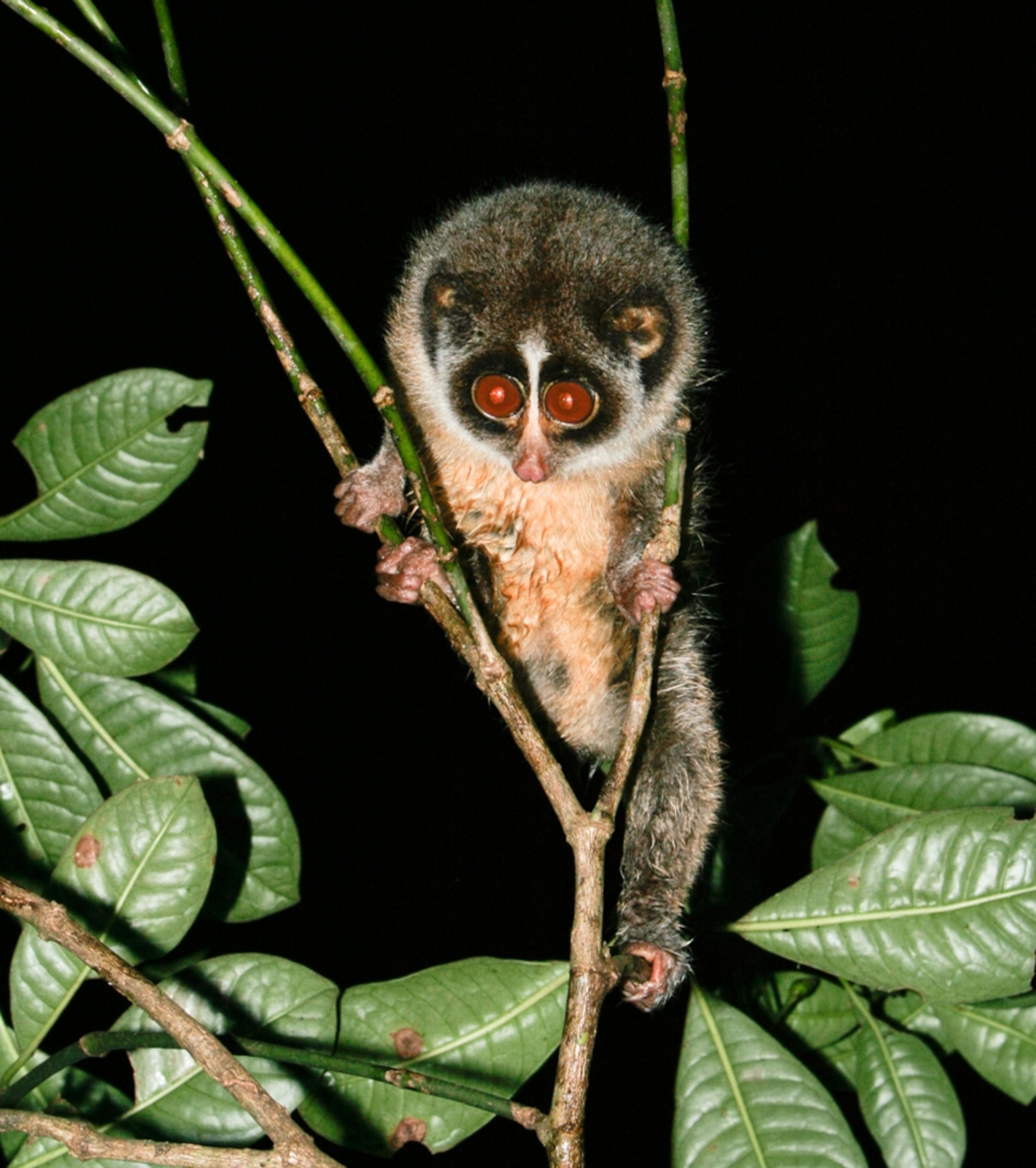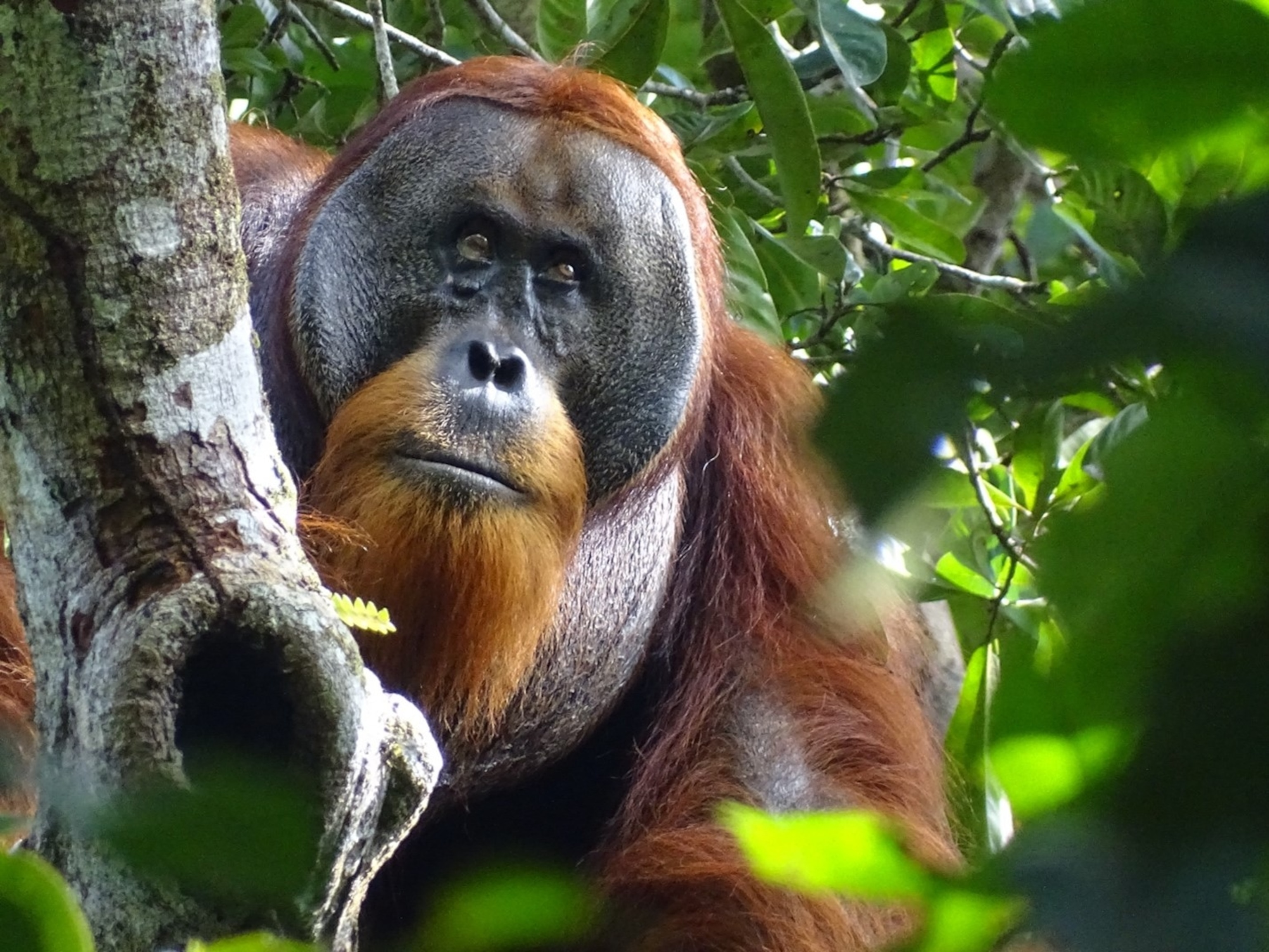
"Extinct," Pop-Eyed Primate Photographed for First Time
Fewer than a hundred Horton Plains slender lorises thought to survive.
Long thought to be extinct, one of the world's rarest primates has been caught on camera for the first time, scientists announced Monday.
(Related: "'Extinct' Bird Seen, Eaten.")
Discovered in 1937 but "missing" for 60 years, Sri Lanka's Horton Plains slender loris was presumed to have died out. In 2002 a fleeting nighttime sighting of something looking like the elusive tree-dweller, however, gave conservationists hope.
Follow-up surveys led by the Zoological Society of London finally confirmed the lorises are alive—if not exactly well—in 2009, when two individuals were photographed and examined.
Initial estimates after the rediscovery put the total world population at fewer than a hundred, said the society's conservation biologist Craig Turner. And in this case, the world is limited to high cloud forests in the Horton Plains area (map) of central Sri Lanka—the animal's only known habitat.
"Potentially this is the rarest primate we're aware of today," Turner said.
(Related pictures: "25 most endangered primates named.")
Lonely Lorises
About 8 inches (20 centimeters) long and weighing just 11 ounces (310 grams), the slow-moving loris has been doomed as forests have been felled for firewood and to make way for tea plantations and other farms, Turner said.
"There's no means for these lorises to move between the [remaining] forest patches," Turner said. "In terms of breeding and finding mates, it is very difficult for them." (See a satellite picture of Horton Plains' forests.)
"The real focus now has to be on the remaining forest areas and looking at how we can enhance and protect them, and also reconnect them to one another," he added.
(Also see "'Extinct' Booby Exposed—Found 'Masked,' Using Alias.")
"New" Loris Also New Species?
The Horton Plains slender loris is generally classified as a subspecies of Sri Lanka's red slender loris. But, thanks in part to the first ever pictures, researchers now believe the "extinct" loris could be a whole new species.
"It's clearly very different physically," Turner said. Compared to lowland lorises, the Horton Plains loris is "stockier, shorter limbed—and it's got a much longer fur coat."
Ongoing tests on DNA samples taken from the few individuals recorded to date, he added, should help to settle the issue.




